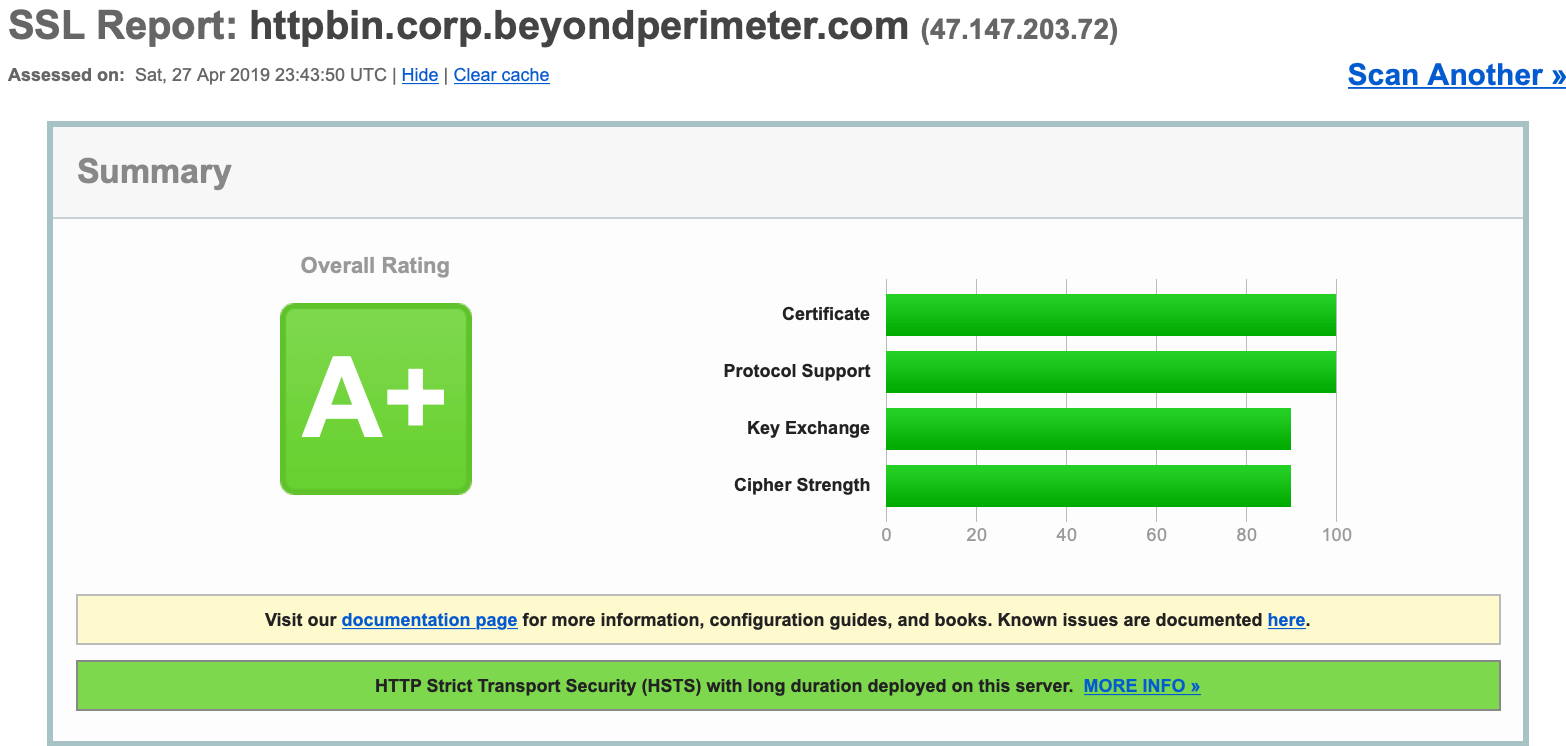6.6 KiB
| title | lang | meta | |||||
|---|---|---|---|---|---|---|---|
| Certificates | en-US |
|
Certificates
Certificates and TLS play a vital role in zero-trust networks, and in Pomerium. This document covers how to generate and set up wild-card certificates suitable for working with pomerium.
This guide uses the following tools and resources:
- LetsEncrypt is a public certificate authority that issues free certificates trusted by the major browsers. Other private or public CAs would also be fine.
- Google Domains registrar will be used to set up our wildcard domain and certificate validation. But any registrar would do and some providers support automatic renewal.
- acme.sh will be used to retrieve the wild-card domain certificate. Any LetsEncrypt client that supports wildcard domains would work.
It should be noted that there are countless ways of building and managing public-key infrastructure. And although we hope this guide serves as a helpful baseline for generating and securing pomerium with certificates, these instructions should be modified to meet your own organization's tools, needs, and constraints.
::: warning
LetsEncrypt certificates must be renewed every 90 days.
:::
Why
Since one of Pomerium's core principles is to treat internal and external traffic impartially, Pomerium uses mutually authenticated TLS ubiquitously. For example, Pomerium uses mTLS between:
- end-user and Pomerium
- Pomerium's services regardless of if the network is "trusted"
- Pomerium and the destination application
How
First, you'll want to set a CNAME record for wild-card domain name you will be using with Pomerium.
Once you've setup your wildcard domain, we can use acme.sh to create a certificate-signing request with LetsEncrypt.
# Requires acme.sh @ https://github.com/Neilpang/acme.sh
# Install (after reviewing, obviously) by running :
# $ curl https://get.acme.sh | sh
$HOME/.acme.sh/acme.sh \
--issue \
-k ec-256 \
-d '*.corp.example.com' \
--dns \
--yes-I-know-dns-manual-mode-enough-go-ahead-please
Creating domain key
The domain key is here: $HOME/.acme.sh/*.corp.example.com_ecc/*.corp.example.com.key
Single domain='*.corp.example.com'
Getting domain auth token for each domain
Getting webroot for domain='*.corp.example.com'
Add the following TXT record:
Domain: '_acme-challenge.corp.example.com'
TXT value: 'Yz0B1Uf2xjyUI7Cr9-k96P2PQnw3RIK32dMViuvT58s'
Please be aware that you prepend _acme-challenge. before your domain
so the resulting subdomain will be: _acme-challenge.corp.example.com
Please add the TXT records to the domains, and re-run with --renew.
Please check log file for more details: $HOME/.acme.sh/acme.sh.log
Removing DNS records.
Not Found domain api file:
LetsEncrypt will respond with the corresponding TXT record needed to verify our domain.
It may take a few minutes for the DNS records to propagate. Once it does, you can run the following command to complete the certificate request process.
# Complete the certificate request now that we have validated our domain
$HOME/.acme.sh/acme.sh \
--renew \
--ecc \
-k ec-256 \
-d '*.corp.example.com' \
--dns \
--yes-I-know-dns-manual-mode-enough-go-ahead-please
Renew: '*.corp.example.com'
Single domain='*.corp.example.com'
Getting domain auth token for each domain
Verifying: *.corp.example.com
Success
Verify finished, start to sign.
Cert success.
-----BEGIN CERTIFICATE-----
.... snip...
-----END CERTIFICATE-----
Your cert is in $HOME/.acme.sh/*.corp.example.com_ecc/*.corp.example.com.cer
Your cert key is in $HOME/.acme.sh/*.corp.example.com_ecc/*.corp.example.com.key
The intermediate CA cert is in $HOME/.acme.sh/*.corp.example.com_ecc/ca.cer
And the full chain certs is there: $HOME/.acme.sh/*.corp.example.com_ecc/fullchain.cer
Here's how the above certificates signed by LetsEncrypt correspond to their respective Pomerium configuration settings:
| Pomerium Config | Certificate file |
|---|---|
| CERTIFICATE | $HOME/.acme.sh/*.corp.example.com_ecc/fullchain.cer |
| CERTIFICATE_KEY | $HOME/.acme.sh/*.corp.example.com_ecc/*.corp.example.com.key |
| CERTIFICATE_AUTHORITY | $HOME/.acme.sh/*.corp.example.com_ecc/ca.cer |
| OVERRIDE_CERTIFICATE_NAME | *.corp.example.com |
Your end users will see a valid certificate for all domains delegated by Pomerium.
Resources
Certificates, TLS, and Public Key Cryptography is a vast subject we cannot adequately cover here so if you are new to or just need a brush up, the following resources may be helpful:
- Why HTTPS for Everything? The US government's CIO office has an excellent guide covering HTTPS and why future government sites will all be HTTPS.
- Is TLS Fast debunks the performance myth associated with HTTPS.
- Use TLS covers why TLS should be used everywhere; not just for securing typical internet traffic but for securing service communication in both "trusted" and adversarial situations.
- Everything you should know about certificates and PKI but are too afraid to ask



